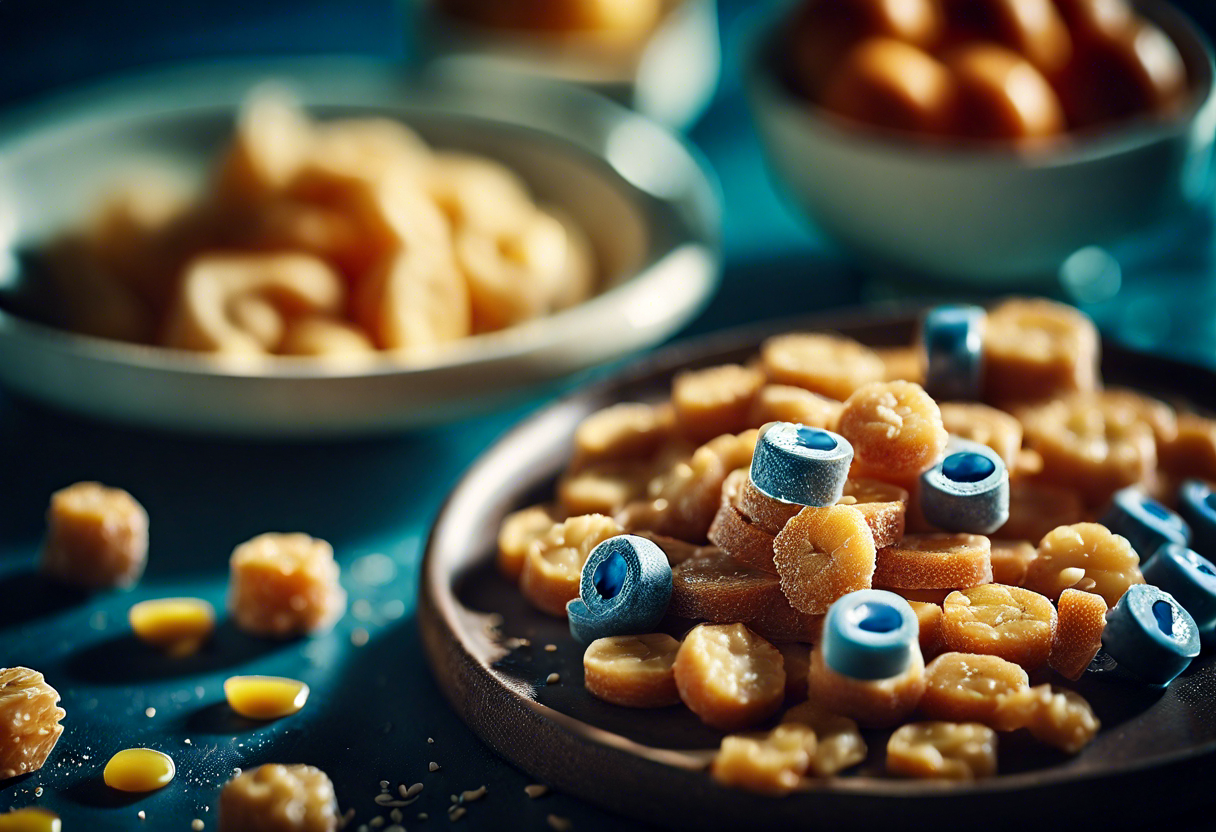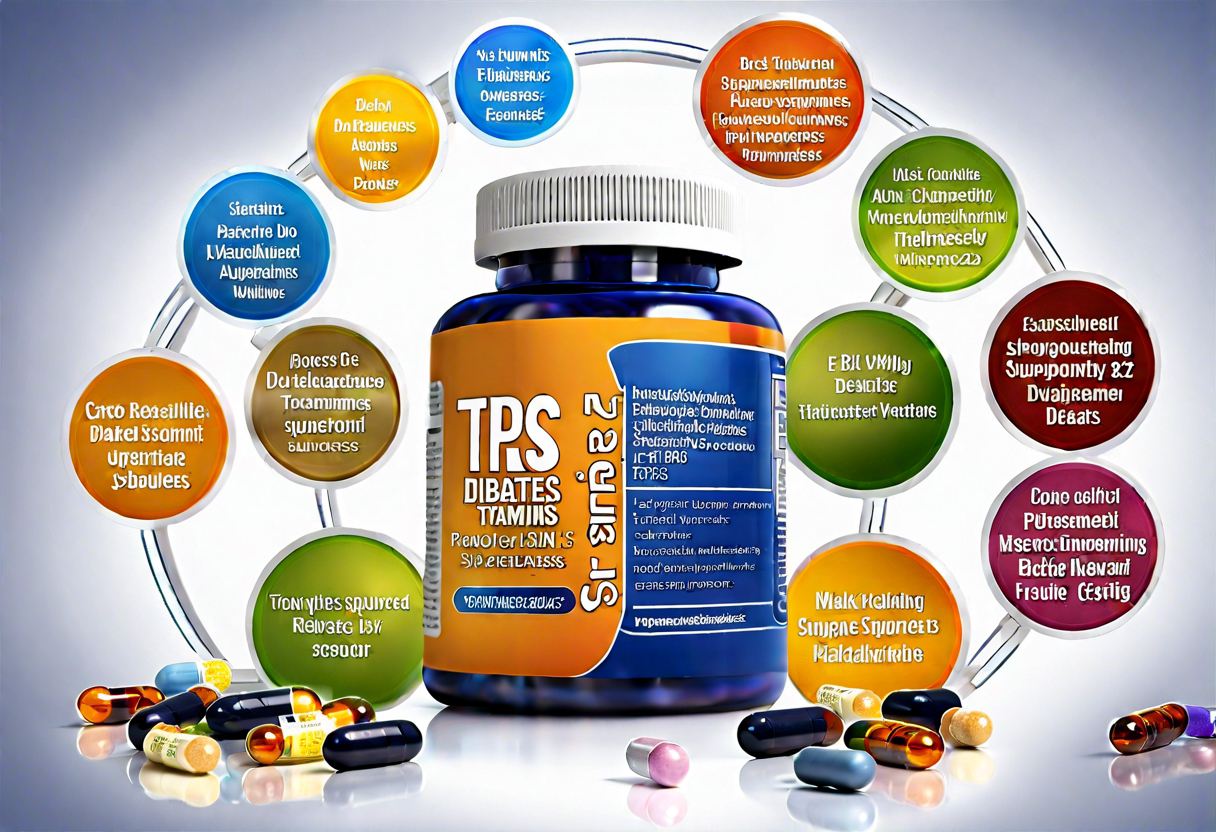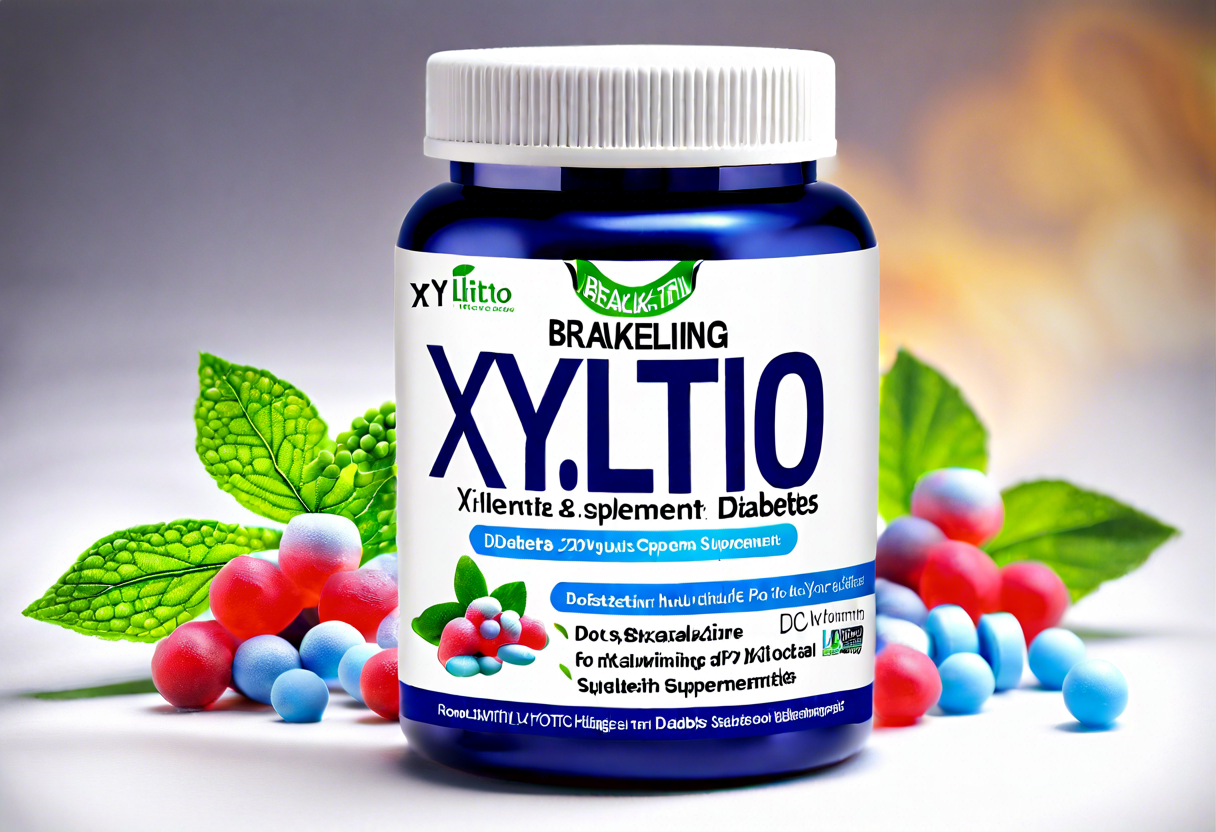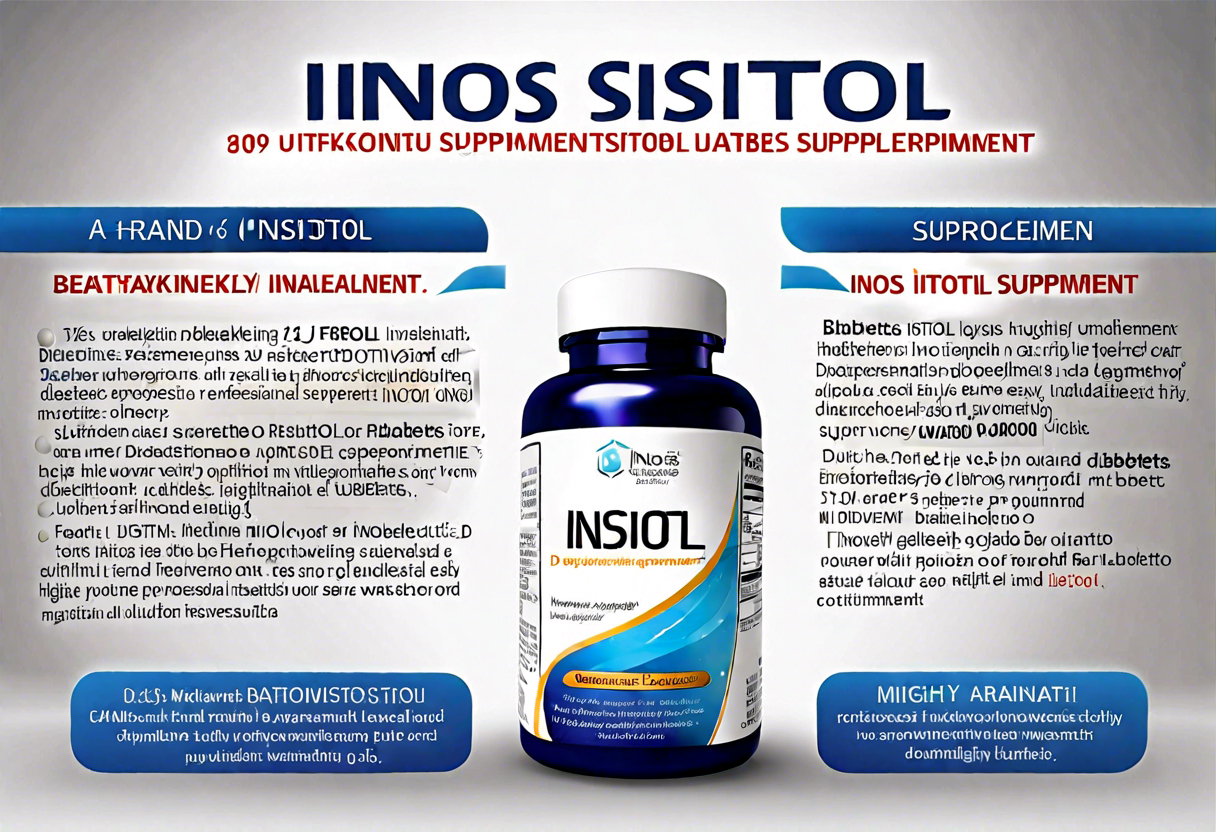Introduction to Low Glycemic Index Foods for Type 2 Diabetes
When managing type 2 diabetes, it is essential to focus on maintaining stable blood sugar levels. One way to achieve this is by incorporating low glycemic index (GI) foods into your diet. The glycemic index is a scale that ranks carbohydrate-containing foods based on how quickly they raise blood sugar levels.
Low glycemic index foods have a score of 55 or less on the glycemic index, while high glycemic index foods have a score of 70 or higher. By choosing low GI foods, you can help regulate your blood sugar levels, improve insulin sensitivity, and maintain better overall control of your diabetes.
When crafting a diet plan for type 2 diabetes, it’s important to consider the types of carbohydrates you consume. Low glycemic index foods break down more slowly, causing a gradual rise in blood sugar levels. This prevents spikes followed by crashes, which can lead to hunger, fatigue, and unstable blood sugar levels.
Some examples of low GI foods include non-starchy vegetables, whole grains, legumes, and lean proteins. Non-starchy vegetables like broccoli, spinach, and bell peppers have a minimal impact on blood sugar levels. Whole grains such as quinoa, brown rice, and oats are rich in fiber, which helps slow down digestion and keeps blood sugar levels steady.
Legumes like lentils, chickpeas, and black beans are not only low in GI but also packed with fiber and protein, making them an excellent choice for managing diabetes. Lean proteins like chicken, fish, and tofu are also low GI and provide essential nutrients without causing spikes in blood sugar.
By incorporating low glycemic index foods into your diet, you can enjoy a wide variety of flavors and textures while keeping your blood sugar levels stable. It is essential to remember that moderation and balance are key. Portion control is still crucial, even with low GI foods, as consuming too much can still affect blood sugar levels.
Low glycemic index foods play a vital role in managing type 2 diabetes. Choosing these foods can help stabilize blood sugar levels, improve insulin sensitivity, and promote overall better control of diabetes. By including a variety of low GI foods in your diet, you can enjoy delicious meals while maintaining stable blood sugar levels and improving your overall health.
Benefits of Low Glycemic Recipes for Type 2 Diabetes
Eating a balanced and nutritious diet is crucial for managing type 2 diabetes. low glycemic recipes into your meal plan can provide a range of benefits that contribute to better blood sugar control and overall health. Here, we explore the advantages of including low glycemic recipes in your diet:
-
Regulates Blood Sugar Levels: Low glycemic recipes typically contain foods with a lower glycemic index (GI), which means they cause a gradual and steady increase in blood sugar levels. These recipes focus on incorporating whole grains, legumes, lean proteins, and healthy fats, which can help stabilize glucose levels and prevent sudden spikes and crashes.
-
Improves Insulin Sensitivity: When you consume high glycemic foods, your body releases a surge of insulin to manage the rapid increase in blood sugar. Over time, this can lead to insulin resistance. By following a low glycemic recipe, you can improve insulin sensitivity, allowing your cells to effectively utilize glucose for energy.
-
Aids Weight Management: Low glycemic recipes are often high in fiber and protein, both of which promote satiety and help control appetite. By incorporating these recipes into your diet, you can feel fuller for longer periods, which may prevent overeating and contribute to weight management.
-
Reduces Risk of Cardiovascular Disease: People with type 2 diabetes are at an increased risk of developing cardiovascular diseases. Low glycemic recipes, which emphasize whole grains, fruits, vegetables, and healthy fats, have been associated with a reduced risk of heart disease. These recipes tend to be lower in saturated fats and cholesterol, promoting heart health.
-
Enhances Nutrient Intake: Low glycemic recipes often include a variety of nutrient-rich ingredients such as whole grains, fruits, vegetables, and lean proteins. By following these recipes, you can ensure that your body receives the essential vitamins, minerals, and antioxidants necessary for optimal health and wellbeing.
Low glycemic recipes into your diet is a practical and effective approach to managing type 2 diabetes. It not only helps regulate blood sugar levels but also promotes weight management, improves insulin sensitivity, reduces the risk of cardiovascular disease, and enhances nutrient intake. By incorporating these recipes into your meal plan, you can take a proactive step towards better blood sugar control and overall health. Remember to consult with a healthcare professional or a registered dietitian before making significant changes to your diet or starting a new meal plan.
Top 5 Low Glycemic Recipes for Type 2 Diabetes
Type 2 diabetes is a chronic condition that affects the way the body processes glucose (sugar). It is important for individuals with type 2 diabetes to manage their blood sugar levels to prevent complications. One effective strategy is to follow a low glycemic diet, which involves consuming foods that have a minimal impact on blood sugar levels. In this article, we will explore the top 5 low glycemic recipes that are not only delicious but also suitable for individuals with type 2 diabetes.
1. Spinach and Mushroom Omelet
Start your day with a nutritious and low glycemic breakfast by preparing a spinach and mushroom omelet. To make this recipe, whisk together eggs, salt, and pepper in a bowl. Heat a non-stick pan and add sliced mushrooms and spinach, cooking until they become tender. Next, pour the beaten eggs over the vegetables and cook until the omelet is firm. This protein-packed dish is not only low in carbohydrates but also rich in vitamins and minerals.
2. Grilled Lemon Herb Chicken
Grilled lemon herb chicken is a flavorful and healthy option for individuals with type 2 diabetes. Marinate chicken breast in a mixture of lemon juice, olive oil, minced garlic, and herbs such as rosemary and thyme. Allow the chicken to marinate for at least 30 minutes before grilling it until it is cooked through. This low glycemic recipe provides lean protein while keeping carbohydrates to a minimum.
3. Quinoa Salad with Chickpeas and Vegetables
Quinoa is a high-fiber grain that has a low glycemic index, making it an ideal ingredient for individuals with type 2 diabetes. Prepare a quinoa salad by cooking quinoa according to package instructions and letting it cool. In a separate bowl, combine cooked chickpeas, diced vegetables such as cucumbers and tomatoes, and a dressing made with lemon juice, olive oil, and herbs. Toss the quinoa with the vegetable and dressing mixture for a satisfying and nutritious low glycemic meal.
4. Baked Salmon with Roasted Vegetables
Salmon is not only a good source of omega-3 fatty acids but also a low glycemic food. For a simple and healthy dinner option, bake a salmon fillet in the oven with a sprinkle of lemon juice and herbs. Serve the salmon with a side of roasted vegetables like broccoli and bell peppers tossed in olive oil and seasoned with salt and pepper. This low glycemic recipe provides a balanced combination of protein, healthy fats, and fiber.
5. Black Bean and Vegetable Chili
Chili is a comforting and satisfying dish that can be made low glycemic-friendly by using black beans and plenty of vegetables. Start by sautéing onions, garlic, and diced bell peppers in a pot. Add canned black beans, diced tomatoes, vegetable broth, and your choice of spices. Simmer the chili for about 30 minutes until the flavors meld together. This hearty and nutritious low glycemic chili is packed with fiber and protein, keeping you full and satisfied.
Low glycemic recipes into your diet can help you maintain better blood sugar control and support your overall health. Try these top 5 recipes and explore the world of delicious and diabetes-friendly meals. Just remember to consult with a healthcare professional or a registered dietitian before making any significant changes to your diet.
Using Low Glycemic Ingredients in Everyday Cooking for Type 2 Diabetes
Eating a well-balanced diet is crucial for managing type 2 diabetes. For people with this condition, incorporating low glycemic ingredients in everyday cooking can help maintain stable blood sugar levels and improve overall health. A low glycemic diet focuses on carbohydrates that have minimal impact on blood sugar levels, making it an ideal choice for individuals with diabetes. Here are some tips for using low glycemic ingredients in your everyday cooking:
- Choose the Right Carbohydrates:
When selecting carbohydrates for your meals, opt for those with a low glycemic index (GI) value. These foods are digested and absorbed more slowly, preventing sharp spikes in blood sugar levels. Examples of low glycemic foods include whole grains like quinoa, barley, and brown rice, legumes such as lentils and chickpeas, and non-starchy vegetables like broccoli, spinach, and peppers. Replace refined grains, sugary snacks, and processed foods with these healthier alternatives.
- Emphasize Fiber-rich Foods:
Fiber not only aids in digestion but also helps regulate blood sugar levels. Include plenty of fiber-rich ingredients in your recipes, like fruits, vegetables, whole grains, and nuts. Adding more fiber to your diet can slow down the absorption of glucose and improve glycemic control. You can incorporate fiber into your cooking by using whole wheat flour instead of white flour, swapping white rice for quinoa or bulgur, and including a variety of colorful vegetables in your dishes.
- Be Mindful of Portion Sizes:
Even low glycemic foods can raise blood sugar levels if consumed in large quantities. Portion control is key, especially when it comes to starchy foods like potatoes, corn, and peas. By monitoring your serving sizes and pairing carbohydrates with protein and healthy fats, you can effectively manage your blood sugar levels. Consider using smaller plates and measuring portions to help you stay on track.
- Use Healthy Cooking Methods:
The way you prepare your food can also affect its glycemic impact. Opt for healthier cooking methods like steaming, baking, grilling, or sautéing rather than deep-frying or pan-frying. These techniques help retain the natural flavors and nutrients of the ingredients without adding excessive fat or calories. Additionally, avoid using high-sugar sauces or dressings and instead opt for herbs, spices, and natural flavorings to enhance the taste of your dishes.
- Experiment with Low Glycemic Recipes:
Explore different low glycemic recipes to add variety to your meals and prevent monotony. Look for recipe sources that specifically cater to individuals with diabetes or focus on low glycemic cooking. You might discover delicious and creative dishes that incorporate foods you may not have tried before. Get inspired by cuisines from around the world and experiment with new flavors and ingredients to keep your meals exciting and enjoyable.
By incorporating low glycemic ingredients into your everyday cooking, you can take control of your diabetes management while still enjoying delicious and satisfying meals. Remember to consult with a healthcare professional or a registered dietitian before making any significant changes to your diet, as they can provide personalized guidance tailored to your specific needs.
How to Plan a Low Glycemic Diet for Better Blood Sugar Control in Type 2 Diabetes
A well-planned low glycemic diet can be highly beneficial for individuals with type 2 diabetes. By focusing on foods that have a low glycemic index, you can help stabilize your blood sugar levels, improve insulin sensitivity, and manage your condition more effectively. In this article, we will discuss key steps to plan a low glycemic diet that promotes better blood sugar control.
Step 1: Understanding the Glycemic Index
Begin by familiarizing yourself with the concept of the glycemic index (GI). This index ranks carbohydrates based on how quickly they raise blood sugar levels. Foods with a low GI (below 55) are digested and absorbed more slowly, resulting in a gradual rise in blood sugar levels. On the other hand, foods with a high GI (above 70) cause a rapid spike in blood sugar levels. By choosing mainly low GI foods, you can keep blood sugar levels more stable throughout the day.
Step 2: Identifying Low GI Foods
Next, focus on incorporating low GI foods into your diet. These include non-starchy vegetables (such as leafy greens, broccoli, and peppers), whole grains (like quinoa and barley), legumes (such as lentils and chickpeas), and certain fruits (like berries and apples). Fill your plate with a variety of these low GI foods to ensure a well-rounded and nutritious diet.
Step 3: Balancing Macros
A balanced low glycemic diet should include a combination of carbohydrates, proteins, and healthy fats. Aim for a moderate intake of carbohydrates to prevent blood sugar spikes. Make sure to incorporate lean protein sources like poultry, fish, tofu, and beans, as well as healthy fats from sources like nuts, seeds, avocado, and olive oil. This macronutrient balance can help manage blood sugar levels while providing essential nutrients.
Step 4: Portion Control
Even with low GI foods, portion control is crucial for maintaining stable blood sugar levels. Pay attention to serving sizes and use measuring tools when necessary. Monitor your carbohydrate intake, as it can have a significant impact on blood glucose levels. Consult with a registered dietitian to determine the appropriate portion sizes for your specific needs.
Step 5: Meal Planning and Preparing Ahead
To make it easier to follow a low glycemic diet, dedicate time to meal planning and preparation. Create weekly menus that include a variety of low GI meals and snacks. Stock your pantry and refrigerator with the necessary ingredients, so you can easily put together balanced and low GI meals. Preparing meals ahead of time can also help you resist the temptation of unhealthy food choices when you’re short on time.
Step 6: Monitor and Adjust
Regularly monitor your blood sugar levels and make adjustments to your diet as needed. Consult with your healthcare team to determine target ranges and discuss any necessary modifications. Keep a food diary to track your intake and note how different foods affect your blood sugar levels. This will enable you to fine-tune your diet and maintain optimal control over your type 2 diabetes.
By following these steps, you can successfully plan a low glycemic diet that promotes better blood sugar control in type 2 diabetes. Remember to consult with a healthcare professional or registered dietitian for personalized advice based on your specific needs and medical history.
Conclusion
Low glycemic recipes into a type 2 diabetes meal plan can have significant benefits for individuals seeking better blood sugar control and overall health. The introduction to low glycemic index foods highlights the importance of understanding how different foods impact blood glucose levels and the role it plays in managing type 2 diabetes. By choosing low glycemic recipes, individuals can ensure a slow and steady release of glucose into the bloodstream, preventing spikes and crashes in blood sugar levels.
Exploring the benefits of low glycemic recipes further emphasizes the positive impact they can have on type 2 diabetes management. These recipes promote steady energy levels, improved weight management, and reduced risk of developing complications associated with diabetes. low glycemic ingredients, such as fiber-rich fruits and vegetables, whole grains, lean proteins, and healthy fats, can also contribute to overall heart health and better control of blood pressure and cholesterol levels.
When it comes to specific low glycemic recipes, there are numerous delicious options available. The article discusses the top five recipes for type 2 diabetes, outlining their nutritional profile and ease of preparation. These recipes range from breakfast options like Quinoa Berry Porridge and Veggie Omelette to lunch and dinner choices like Baked Salmon with Roasted Vegetables and Chickpea Curry. these recipes into a weekly meal plan can add variety and flavor while ensuring stable blood sugar levels.
Low glycemic ingredients in everyday cooking is not limited to following specific recipes. This section of the article emphasizes the importance of understanding the glycemic index of various foods and making informed choices. By opting for low glycemic fruits, vegetables, and grains, individuals can diversify their meals and create their own low glycemic recipes. For example, replacing white rice with quinoa or cauliflower rice can significantly reduce the glycemic impact of a dish. Similarly, choosing whole fruits instead of fruit juices or processed snacks can provide additional fiber and minimize blood sugar spikes.
To effectively plan a low glycemic diet for better blood sugar control, individuals are encouraged to focus on balance, portion control, and mindful eating. The article provides practical tips on meal planning, including incorporating a variety of low glycemic foods, controlling carbohydrate intake, and paying attention to hunger and fullness cues. It also suggests consulting a registered dietitian or healthcare provider for personalized guidance and support in designing a suitable low glycemic meal plan.
Adopting a low glycemic approach to nutrition is vital for individuals with type 2 diabetes. The benefits of incorporating low glycemic recipes and ingredients into everyday cooking are numerous, ranging from improved blood sugar control and weight management to reduced risk of diabetes-related complications. By selecting foods with a low glycemic index and following expert guidelines for meal planning, individuals can take significant steps towards better managing their type 2 diabetes and achieving optimal overall health.









